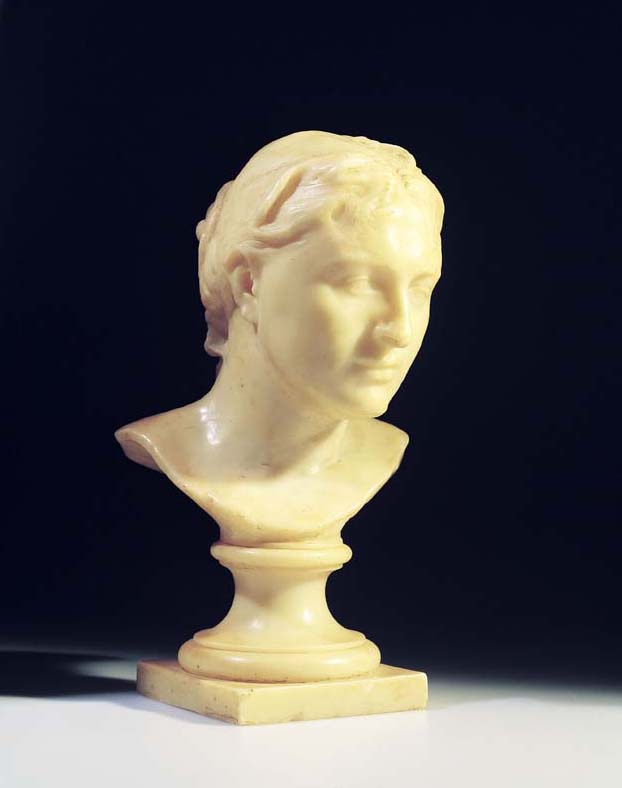We acknowledge the Traditional Owners of the land on which the Queensland Art Gallery | Gallery of Modern Art stands and recognise the creative contribution First Australians make to the art and culture of this country.

Auguste Rodin / France 1840–1917 / Madame Russell 1888 / Wax / 33.2 x 27 x 24cm; 46 x 27 x 24cm (with base) / Purchased 1992 with funds from the 1991 International Exhibitions Program / Collection: Queensland Art Gallery | Gallery of Modern Art
Auguste RodinMadame Russell 1888
On Display: QAG, Gallery 7
Auguste Rodin was one of the great figures in French art at the turn of the century. His work, however, was part of a larger environment which drew him into contact with one of Australia’s most significant impressionist painters, John Russell. Rodin found Russell to be an entertaining companion and included him in his circle of friends. Russell married the Italian model Anna Maria Antonietta Mattiocco in 1888 (later also known as Marianna Russell). She had modelled for several artists before her marriage (and it was thought for Rodin), but Russell commissioned her bust from Rodin the same year, which was probably to commemorate their marriage.
Rodin is known to have made at least four wax portraits of Marianna Russell, who he considered to be the ‘most beautiful woman in Paris’. These portraits became the inspiration of a series of subsequent works, including Minerva without a helmet (Minerva sans casque) c. 1896 (Collection: National Gallery of Victoria) and Pallas with the Parthenon 1896 (Collection: Musée Rodin). Madame Russell forms a significant link between the Gallery’s collection of works by John Russell and those by Auguste Rodin.
The charismatic and obsessive French sculptor René Françoise Auguste Rodin (1840–1917) remains a fascinating figure, his work, the subject of numerous controversies during his lifetime, continues to inspire debate, particularly his intimate representations of the female figure. There is little dispute, however, about his importance to modern sculpture and his continuing influence on contemporary artists, writers, and even choreographers.
Born in 1840, the son of a police official, Rodin had no formal art training at an academy, but instead worked as an assistant in artists’ studios. This experience gave him a broad familiarity with mediums and techniques, and allowed him to experiment with a variety of materials — creating rich patinas by mixing copper and zinc; and using clay, wax, plaster, bronze and marble. Rodin said of this time: ‘Where did I learn to understand sculpture? In the woods by looking at the trees, along roads by observing the formation of clouds, in the studio by studying the model, everywhere except in the schools.’1
Fascinated by how the human body moves, Rodin would ask female models to walk nude around the studio, rather than holding a pose. He produced thousands of sketches and drawings, and preferred street performers, entertainers, dancers and acrobats as live models because their poses and gestures were less formal, more dynamic and more complex than traditional academic models. A distinguishing characteristic of Rodin’s sculptures is the internal, potential energy expressed through the shaping of muscle under smooth skin. Heavy texture is used as a device for moving the eye around the composition of the sculpture.
Endnotes:
1. Auguste Rodin, cited in Rachel Corbett, You Must Change Your Life: The Story of Rainer Maria Rilke and Auguste Rodin, W.W. Norton & Company, New York, 2016, p.12.